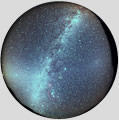Zodiacal Light, Zodiacal Band & Gegenschein Images
Zodiacal Light, Zodiacal Band & Gegenschein Images
Have you ever gazed up at the night sky and noticed a faint glow extending upwards from the horizon? This ethereal phenomenon is known as Zodiacal Light, and it is just one part of a larger celestial spectacle that includes the Zodiacal Band and the Gegenschein. In this article, we will delve into the captivating world of these atmospheric optics phenomena and explore their origins, characteristics, and the stunning images they produce.
What is Zodiacal Light?
Zodiacal Light is a faint cone of light that extends along the ecliptic, which is the path that the Sun, Moon, and planets follow across the sky. It appears as a triangular glow that is brightest near the horizon and fades as it rises towards the zenith. This celestial phenomenon can be observed in both the morning and evening skies, but it is most visible in locations with dark skies and minimal light pollution.
The Zodiacal Band: A Cosmic Highway
The Zodiacal Band is an extension of Zodiacal Light that spans across the entire sky. It forms a broad, faint band of light that follows the same path as the ecliptic. This band is composed of countless tiny dust particles that are spread throughout the inner solar system. These particles, which are remnants from comets and asteroids, scatter sunlight and create the beautiful glow that we see as the Zodiacal Band.
The Enigmatic Gegenschein
Moving further into the realm of atmospheric optics, we encounter the enigmatic Gegenschein. Unlike Zodiacal Light and the Zodiacal Band, which are both visible near the horizon, the Gegenschein appears directly opposite the Sun in the night sky. It manifests as a faint spot of light in the region of the sky opposite to where the Sun is located.
Explaining the Phenomena
To understand the origins of these atmospheric optics phenomena, we need to delve into the physics behind them. The Zodiacal Light, Zodiacal Band, and Gegenschein are all caused by sunlight scattering off dust particles in the inner solar system. These particles are believed to be remnants from comets, asteroids, and other celestial bodies. As sunlight passes through the dust cloud, it scatters in all directions, creating the luminous effects that we observe.
Capturing the Beauty: Images of Zodiacal Light, Zodiacal Band & Gegenschein
Photographers and astronomers have captured breathtaking images of these celestial phenomena, showcasing their ethereal beauty. These images provide a glimpse into the awe-inspiring spectacle that occurs in the night sky. From long-exposure shots that reveal the intricate details of the Zodiacal Light and Band to time-lapse sequences that capture the Gegenschein's elusive presence, these photographs serve as a testament to the wonders of our universe.
Chasing the Zodiacal Light, Zodiacal Band & Gegenschein
To witness these atmospheric optics phenomena firsthand, one must venture to dark and unpolluted locations away from city lights. The best times to observe Zodiacal Light are during the spring and autumn months when the ecliptic is at a steep angle to the horizon. In contrast, the Gegenschein is most visible during moonless nights in areas with minimal light pollution.
Unraveling the Mysteries
While scientists have made significant strides in understanding the physics behind Zodiacal Light, the Zodiacal Band, and the Gegenschein, there is still much to uncover. Researchers continue to study these atmospheric optics phenomena to gain further insights into the composition and distribution of interplanetary dust particles. By unraveling these mysteries, we can deepen our understanding of the solar system's history and evolution.
A Cosmic Dance of Light
Zodiacal Light, the Zodiacal Band, and the Gegenschein collectively form a cosmic dance of light that illuminates our night sky. These atmospheric optics phenomena serve as a reminder of the intricate connections between celestial bodies and the beauty that lies beyond our planet. Whether you are an avid stargazer or simply in awe of the wonders of the universe, taking a moment to appreciate these celestial spectacles can truly be a humbling and awe-inspiring experience.
Conclusion
In conclusion, Zodiacal Light, the Zodiacal Band, and the Gegenschein are captivating atmospheric optics phenomena that grace our night sky. From the faint glow of Zodiacal Light near the horizon to the ethereal band of the Zodiacal Band and the elusive presence of the Gegenschein, these celestial spectacles offer a glimpse into the wonders of our universe. Through photography and scientific exploration, we continue to deepen our understanding of these phenomena and unravel the mysteries they hold. So, next time you find yourself under a clear night sky, take a moment to gaze upwards and marvel at the cosmic dance of light unfolding above you.





Note: this article has been automatically converted from the old site and may not appear as intended. You can find the original article here.
Reference Atmospheric Optics
If you use any of the definitions, information, or data presented on Atmospheric Optics, please copy the link or reference below to properly credit us as the reference source. Thank you!
-
<a href="https://atoptics.co.uk/blog/zodiacal-light-zodiacal-band-gegenschein-images/">Zodiacal Light, Zodiacal Band & Gegenschein Images</a>
-
"Zodiacal Light, Zodiacal Band & Gegenschein Images". Atmospheric Optics. Accessed on November 26, 2024. https://atoptics.co.uk/blog/zodiacal-light-zodiacal-band-gegenschein-images/.
-
"Zodiacal Light, Zodiacal Band & Gegenschein Images". Atmospheric Optics, https://atoptics.co.uk/blog/zodiacal-light-zodiacal-band-gegenschein-images/. Accessed 26 November, 2024
-
Zodiacal Light, Zodiacal Band & Gegenschein Images. Atmospheric Optics. Retrieved from https://atoptics.co.uk/blog/zodiacal-light-zodiacal-band-gegenschein-images/.